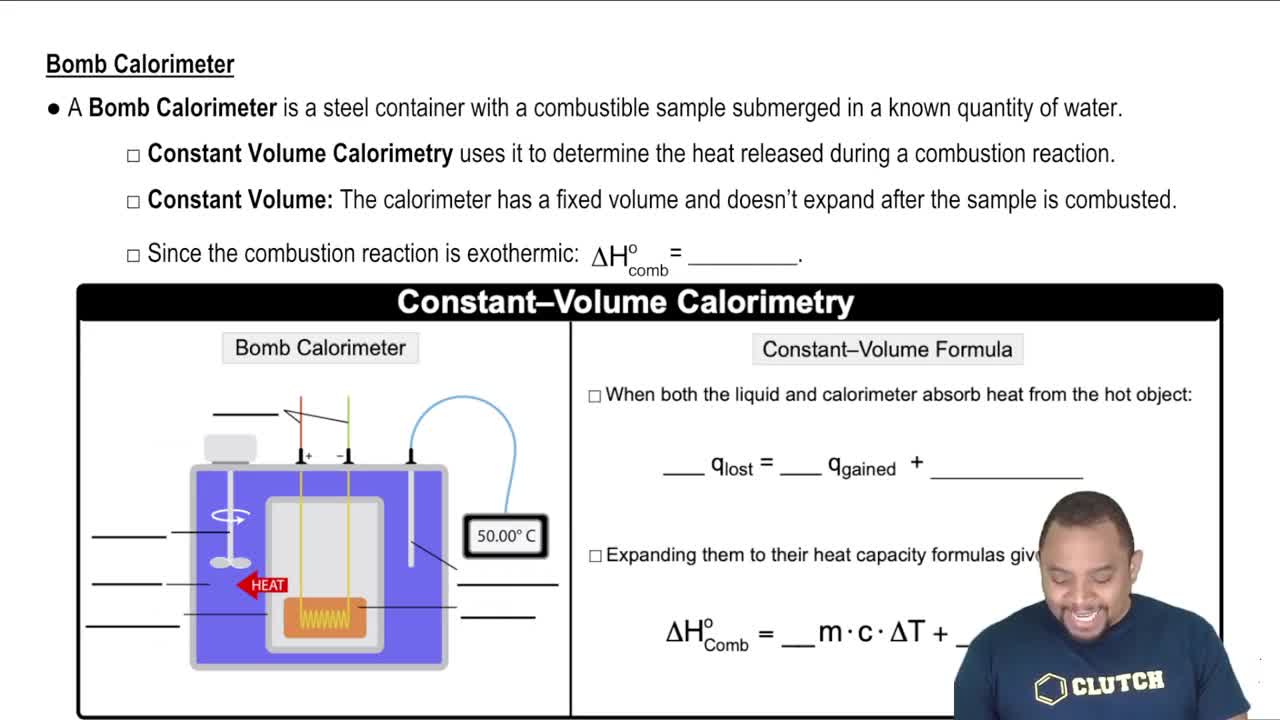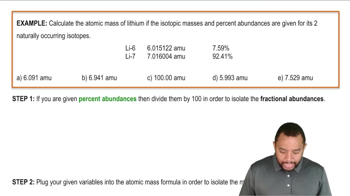Force is defined as mass times acceleration. Starting with SI base units, derive a unit for force. Using SI prefixes, suggest a convenient unit for the force resulting from a collision with a 10-ton trailer truck moving at 55 mi per hour and for the force resulting from the collision of a molecule of mass around 10 - 20 kg moving almost at the speed of light (3×108 m/s) with the wall of its container. (Assume a 1-second deceleration time for both collisions.)
Ch.1 - Matter, Measurement & Problem Solving

Chapter 1, Problem 115
A thief uses a can of sand to replace a solid gold cylinder that sits on a weight-sensitive, alarmed pedestal. The can of sand and the gold cylinder have exactly the same dimensions (length = 22 and radius = 3.8 cm). a. Calculate the mass of each cylinder (ignore the mass of the can itself). (density of gold = 19.3 g/cm3, density of sand = 3.00 g/cm3) b. Does the thief set off the alarm? Explain.
 Verified step by step guidance
Verified step by step guidance1
Calculate the volume of the cylinder using the formula for the volume of a cylinder: \( V = \pi r^2 h \), where \( r \) is the radius and \( h \) is the height.
Substitute the given dimensions (radius = 3.8 cm, height = 22 cm) into the volume formula to find the volume of the cylinder.
Calculate the mass of the gold cylinder using the formula: \( \text{mass} = \text{density} \times \text{volume} \), with the density of gold given as 19.3 g/cm³.
Calculate the mass of the sand cylinder using the same mass formula, with the density of sand given as 3.00 g/cm³.
Compare the masses of the gold and sand cylinders to determine if the difference in mass would set off the weight-sensitive alarm.

Verified video answer for a similar problem:
This video solution was recommended by our tutors as helpful for the problem above.
Video duration:
4mWas this helpful?
Key Concepts
Here are the essential concepts you must grasp in order to answer the question correctly.
Density
Density is defined as mass per unit volume and is a crucial property of materials. It is calculated using the formula density = mass/volume. In this scenario, knowing the densities of gold and sand allows us to determine their respective masses based on their identical volumes, which is essential for solving the problem.
Recommended video:
Guided course

Density Concepts
Volume of a Cylinder
The volume of a cylinder can be calculated using the formula V = πr²h, where r is the radius and h is the height. Since both the gold cylinder and the can of sand have the same dimensions, this formula will yield the same volume for both, allowing for a direct comparison of their masses based on density.
Recommended video:
Guided course

Constant-Volume Calorimetry
Mass Comparison and Alarm Mechanism
The alarm mechanism is sensitive to changes in mass on the pedestal. By calculating the masses of both the gold cylinder and the can of sand, we can determine if the thief's substitution will trigger the alarm. If the mass of the sand is less than that of the gold, the alarm will be set off, indicating the theft.
Recommended video:
Guided course

Atomic Mass Comparison Example
Related Practice
Textbook Question
6
views
Textbook Question
The value of the euro was recently \$1.15 U.S., and the price of 1 liter of gasoline in France is 1.42 euro. What is the price of 1 gallon of gasoline in U.S. dollars in France?
Textbook Question
The proton has a radius of approximately 1.0×10−13 cm and a mass of 1.7×10−24 g. Determine the density of a proton for a sphere V = (4/3)πr3.
29
views
Textbook Question
The density of titanium is 4.51 g/cm3. What is the volume (in cubic inches) of 3.5 lb of titanium?
Textbook Question
The density of iron is 7.86 g/cm3. What is its density in pounds per cubic inch (lb/in3)?
1
views
